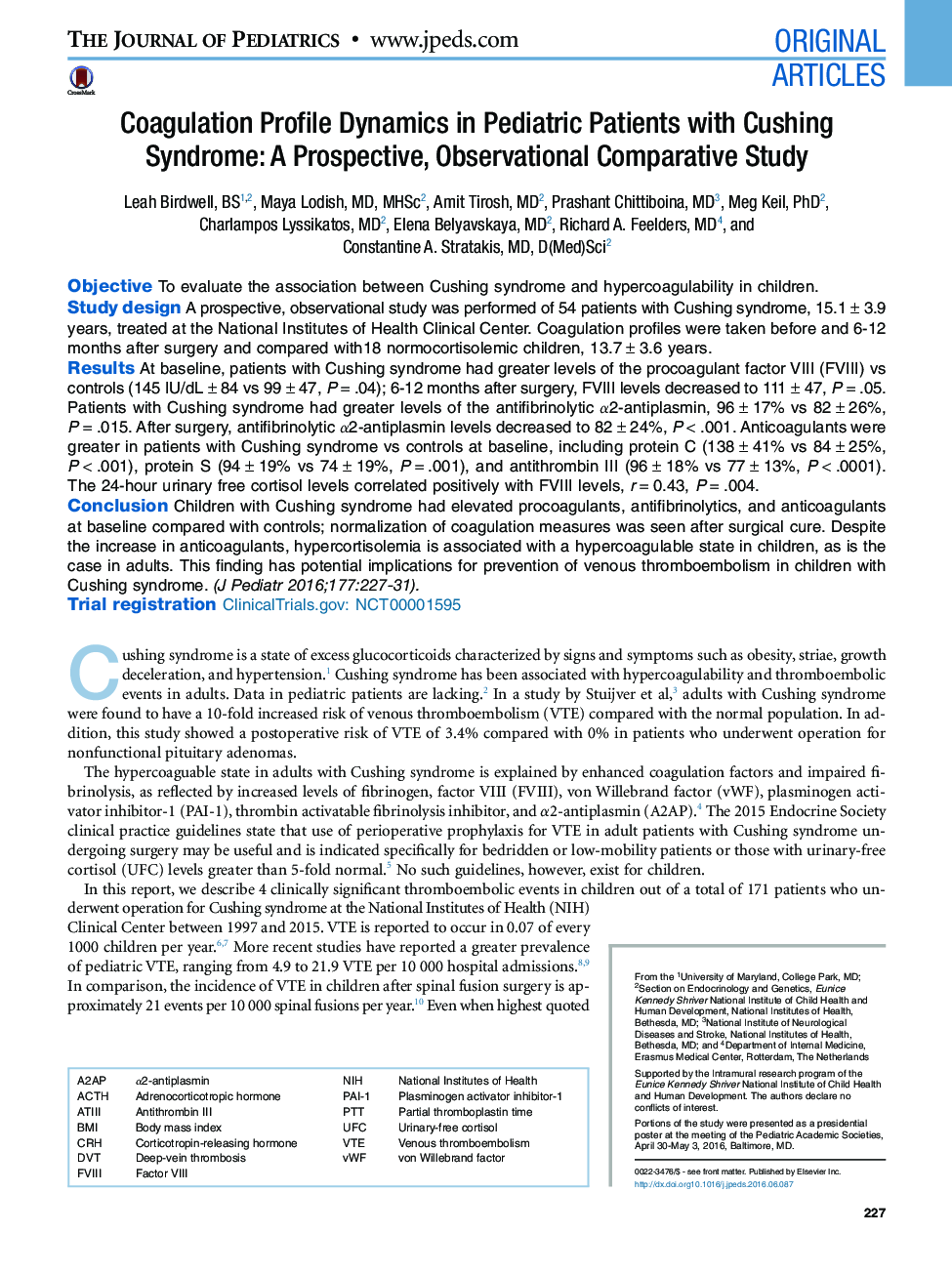| Article ID | Journal | Published Year | Pages | File Type |
|---|---|---|---|---|
| 6218735 | The Journal of Pediatrics | 2016 | 5 Pages |
ObjectiveTo evaluate the association between Cushing syndrome and hypercoagulability in children.Study designA prospective, observational study was performed of 54 patients with Cushing syndrome, 15.1â±â3.9 years, treated at the National Institutes of Health Clinical Center. Coagulation profiles were taken before and 6-12 months after surgery and compared with18 normocortisolemic children, 13.7â±â3.6 years.ResultsAt baseline, patients with Cushing syndrome had greater levels of the procoagulant factor VIII (FVIII) vs controls (145âIU/dLâ±â84 vs 99â±â47, Pâ=â.04); 6-12 months after surgery, FVIII levels decreased to 111â±â47, Pâ=â.05. Patients with Cushing syndrome had greater levels of the antifibrinolytic α2-antiplasmin, 96â±â17% vs 82â±â26%, Pâ=â.015. After surgery, antifibrinolytic α2-antiplasmin levels decreased to 82â±â24%, Pâ<â.001. Anticoagulants were greater in patients with Cushing syndrome vs controls at baseline, including protein C (138â±â41% vs 84â±â25%, Pâ<â.001), protein S (94â±â19% vs 74â±â19%, Pâ=â.001), and antithrombin III (96â±â18% vs 77â±â13%, Pâ<â.0001). The 24-hour urinary free cortisol levels correlated positively with FVIII levels, râ=â0.43, Pâ=â.004.ConclusionChildren with Cushing syndrome had elevated procoagulants, antifibrinolytics, and anticoagulants at baseline compared with controls; normalization of coagulation measures was seen after surgical cure. Despite the increase in anticoagulants, hypercortisolemia is associated with a hypercoagulable state in children, as is the case in adults. This finding has potential implications for prevention of venous thromboembolism in children with Cushing syndrome.Trial registrationClinicalTrials.gov: NCT00001595
